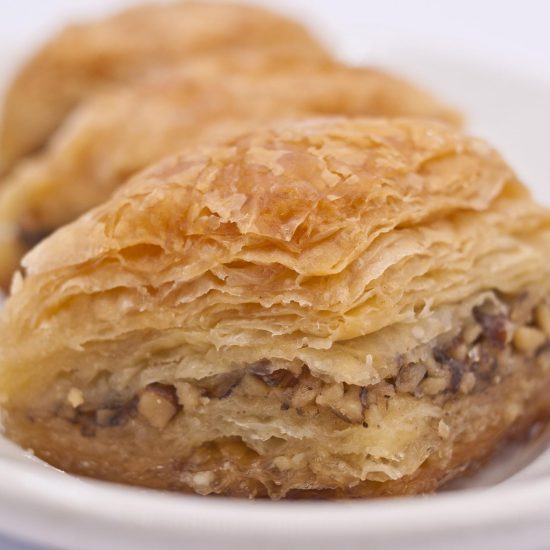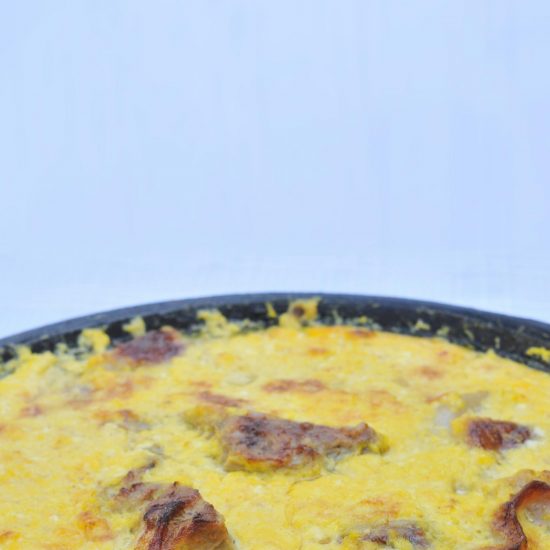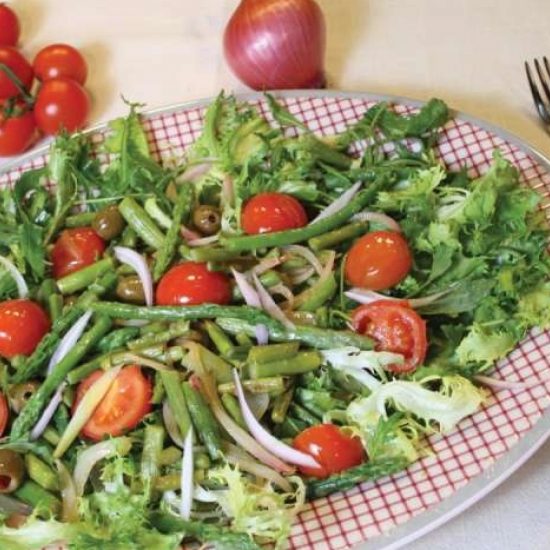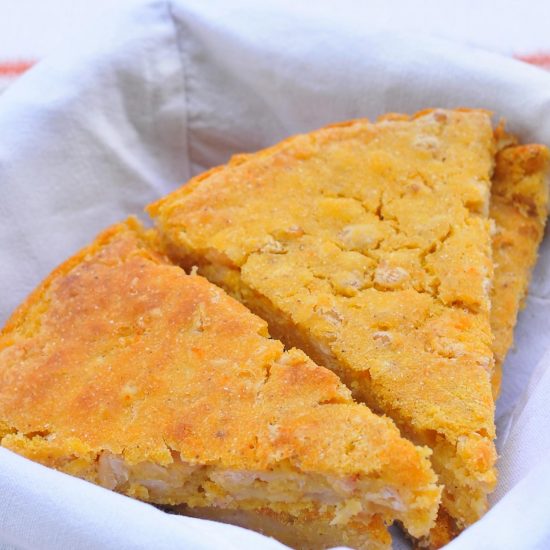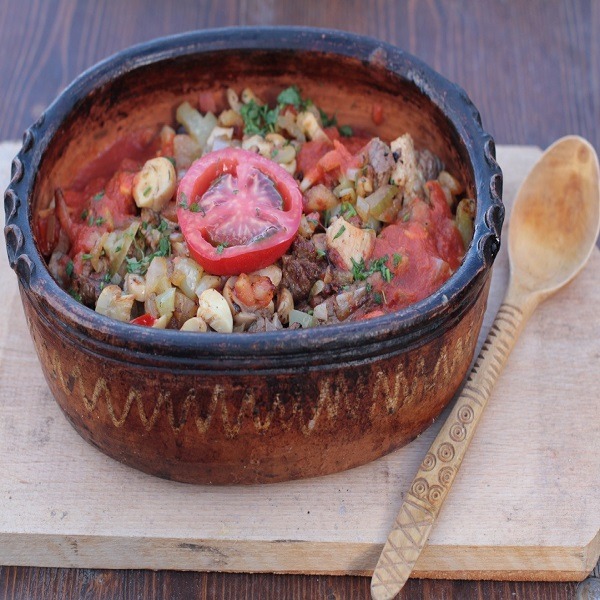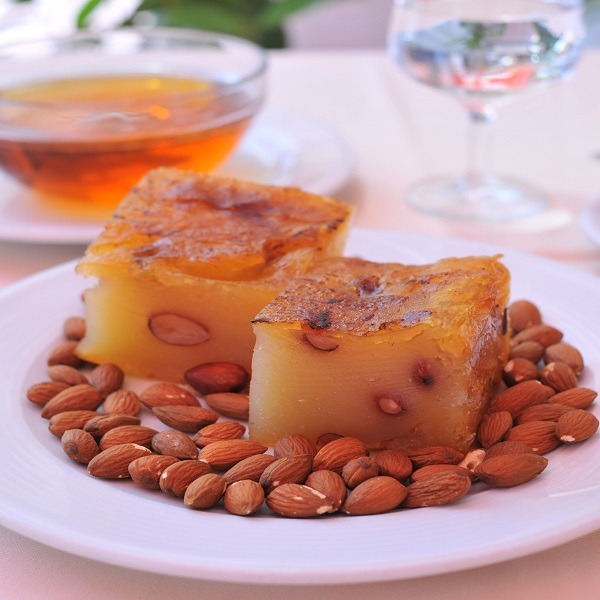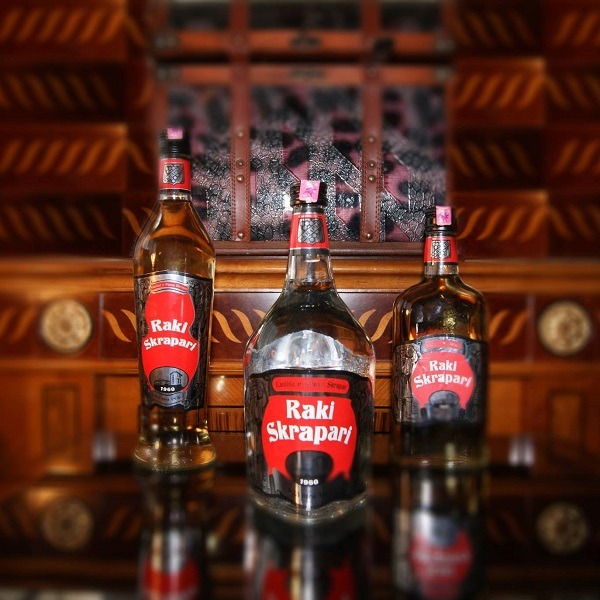Albanian cuisine offers a truly unique blend of Mediterranean flavours. Representing a rich historical past, the food of modern Albania has been developed over millennia reflects a variety of influences. East meets west in many discernable ways throughout Albanian culture, but nowhere is it more evident than in the cuisine.
The mild climate is favorable for many agricultural pursuits. Among Albania’s most popular are: peppers, eggplants, tomatoes, cucumbers, and an assortment of legumes. The wide variety of fruits and vegetables grown here serves to further enhance this varied fare.
These vegetables are combined with meats in a number of delectable ways to form the basis for many Albanian delights. Most often, these creations are baked in earthenware or sautéed, and take one of the following forms: stew, casserole, stuffed vegetables, or meatballs. Other types of dishes blend many vegetables (with or without meat), and can be traced to Asian origins.
As in many other Mediterranean countries, olives are a staple in Albania. Although they are most frequently enjoyed on their own, olives combine with many foods and are an essential ingredient in many signature dishes. Types vary by region. Olives from the Berat region are prized for their unique flavour and low fat content. Olives from Vlora, Borsh, Himara, and Tirana are higher in fat content and are more often used for olive oil production.
Albanian cuisine also uses a variety of spices to enhance food flavours. Garlic and hot peppers are popular options for flavouring. Often subtle, the flavours sometimes arise from non-spice ingredients such as lemon, vinegar, and/or yogurt. Albanian chefs rarely mix spices, instead choosing one that harmonizes most closely with the dish’s natural aroma. Recipes rarely specify quantities of spices to be used, recognizing that this is a matter to be adjusted based on the other ingredients in the dish.
Milk and milk products play a large role in Albanian cuisine, as well. Yogurt is consumed daily by many Albanians and forms the basis for many sauces and other dishes. Buttermilk is also very popular; both as an ingredient or alone, as a drink. Albanian cheeses are unique and also vary by region. The most popular is a white cheese made from sheep’s milk and originating from the south. Similar to feta, it is found in many dishes.
Desserts often accompany Albanian dishes, thus completing the meal. Often they are made from a variety of creams and fruit juices, and sometimes use local honey as a sweetener. Baklava, cookies, and puddings are all dessert staples. Another popular option is some variation of sweet or savory dough balls. Boza is a common drink served as part of dessert. It is produced from maize and originates in the north. Particularly refreshing in the summer, it offers a pleasant, non-alcoholic option. Often the most delicious desert, however, is the most simple: a variety of seasonal fruits, served plain, can be the perfect ending to a scrumptious meal.
Alcoholic beverages are interwoven with Albania’s history. The most popular and traditional is raki. It is often made from grapes, but can be distilled from a variety of fruits, including plums. The best raki is made in small batches by artisans who truly take pride in their craft. Regions in the south are noted for their grape raki production, while the colder regions in the north specialize in plum raki.
Wine has long been produced in Albania, and represents a centuries-old tradition. Through archeological finds, production has been traced back some 3,000 years to the Illyrians, who established a thriving wine industry. Wine production continued to flourish under the Byzantines. Several unique varieties are enjoyed throughout Albania: Shesh i zi, Kallmet, Mavrud, and Malaga.
Cognac is also popular here, and a local brand, “Skanderbeg,” has won several international competitions.
Brochure Culinary English





